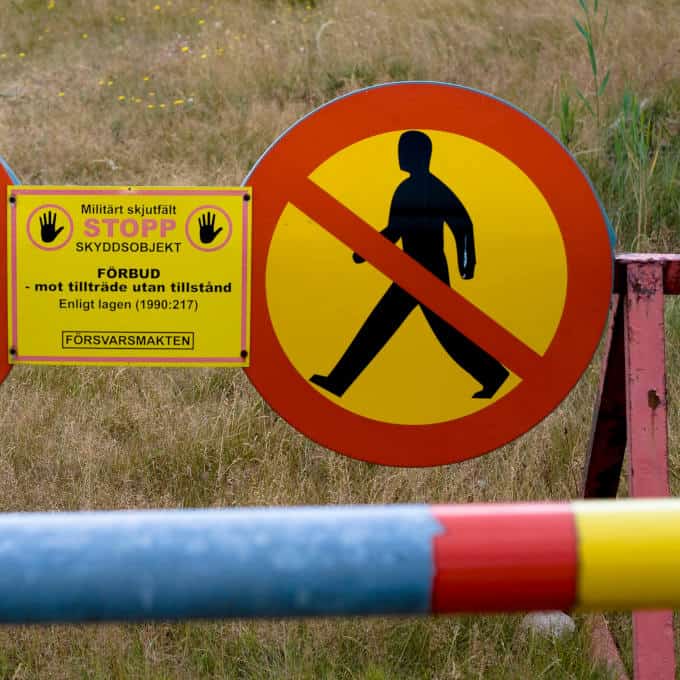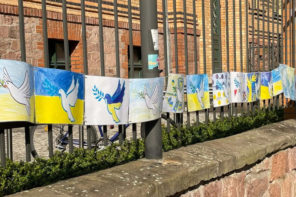Where do we draw the line of separation? Who draws it, and for which purposes? When the former interior minister of Italy, Matteo Salvini, launched his little war against the German sea rescue captain Carola Rackete, recounted on these pages by Sébastien Bachelet, he was consciously drawing the line of separation among EU citizens rather than just between Europeans and unwanted outsiders. But in doing so, he was also tapping into a much deeper political story, and into a peculiar mapping of the world, that separates safety from danger, global ‘red zones’ from ‘green zones’, community from supposedly external chaos.
It is this story, and this map, that No Go World takes as its object of inquiry. This was a tricky task, I found. Not only is anthropology’s methodology rather hard to adapt to such an elusive and multi-scalar topic, but the tangle of dominant narratives and cartographies of insecurity and danger turns the story into a tapestry of only partially interwoven strands. Border security, risk management, counterterror, humanitarianism and peacekeeping mix and mingle in the ‘danger zones’ on the margins of the world map, rendering the picture unclear even to insiders. Yet what is clear is the harm and error besetting the political story of a dangerous world ‘out there’ that must be kept at bay. It separates, at a time when more solidarity and connection are needed. It cuts accountability and responsibility, and so deepens the dangers. And it generates incentives for escalation, as seen whenever ‘partner’ regimes in the fight against migration or the war on terror threaten Western donors with severe consequences unless they receive more resources for their role in containing faraway threats.
There are many strands to pick out from the three thoughtful responses to the book, but let me start with an important point raised by Anna Tuckett. Commenting on the predicament of African aid workers and soldiers sent to deal with the dangers in the ‘red zone’ of Mali’s conflict-hit north, she notes how they share with sweat-shop and call-centre workers worldwide a ‘position at the sharp end of global capitalism’.
In other words, the dangerous division of labour at work in distant danger zones is part of a much wider evasion of responsibility and risk by powerful groups.
I saw this not just among aid workers and peacekeepers in Mali, but also among ordinary civilians who welcomed internally displaced people (IDPs) in their own courtyards for months on end and with nothing in return.

This point goes to the heart of a more disciplinary point I wish to make: that anthropologists must step up efforts to re-scale our methods and analyses as we grapple with the man-made ‘crises’ of our times. Two of the reviews remark on the somewhat unorthodox approach of No Go World, at least as far as ethnography is concerned; it is, I am very much aware, not very ‘ethnographic’ in the strict sense. Yet this is in some ways the point. It would be a very valuable thing to explore at book length how a particular local society interacts with the messiness of international security intervention, for instance in Mali’s embattled north. Yet it is another thing entirely to try and understand the logics and modus operandi of the wider system of interventions of which this particular case forms a part. The country’s peacekeeping and counterterror missions, after all, are intimately tied up not just with the NATO intervention in Libya or with European fears of African migration, but also with a wider separation of interveners and local society, as seen from the bunker walls of Kabul to the ‘remote management’ of Syrian aid. Tackling these systemic features of ‘security’ must inevitably mean experimenting with method, analysis and style in a way that lets us weave together different scales, as Tuckett notes – reaching from the local to the global and back again. In my concluding notes to the book, I suggest an intimate anthropology of systems may be a way of doing so, drawing on pioneering strands of our discipline’s history as well as on vast literatures beyond it.
Grappling with systemic problems, I should add, is not just an anthropological task – it is also an acute challenge for the interveners themselves. Ignacio Fradejas-García offers intriguing observations of the frustration and indifference experienced by remote aid managers working on Syria, to the point where the site of aid delivery inside the war-torn country drops off the cartographic margins, in a faint echo of the dangerous limits of Medieval maps with which No Go World begins. I encountered this mix of frustration and indifference myself among aid workers and UN personnel stuck in their headquarters in Mali’s capital, Bamako. Aid officials complained they had little idea of what happened with their assistance up north. UN staff knew they had to understand the intricate links between shifting separatist factions and their turfs of contraband and control, yet were painfully aware of their shallow grasp while stationed at a remove. As for peacekeepers, one of them scathingly called Mali’s UN mission a ‘giant with a bloated head and clay feet’, with too many qualified staff stuck in a five-star hotel HQ in Bamako while the dangerous north remained in the hands of under-equipped and underprepared African soldiers. By the time I left, in 2014, the clay feet were already wobbling, in an omen of the insecurity that would soon spread south to central Mali and across the region.
In short, the anthropologist and the intervener both grapple with the limits of their reach within a wider systemic picture of risk and danger. Often, it may seem easier to step back from this limit. As scholars we may re-focus our research elsewhere, retreating into our safe zone of small-scale ethnography. Interveners who do go to Mali and other ‘danger zones’ may withdraw to their offices and rooftop reggae parties, comforted by a fragile sense of security in hostile lands. Others actively seek to breach the limit, reaping the rewards (and risks) of confronting danger. Yet in No Go World, I rather ended up taking the limit itself as my object of inquiry. As I did so, I used ethnography as a tool for probing the waters:
how far does it reach and what do the limits of participant observation tell us, once we scale up and compare our predicament with wider systemic trends in intervention, reaching from reinforced borders to bunkers in the field?
In a sense, I was turning ethnography ‘inside out’, using myself as the pivot for inverting my focus from out-of-reach local realities to the systemic features that generated the disconnect and withdrawal – not just in Mali, but elsewhere too, from Libya and Somalia to Afghanistan and even the US-Mexico border.
This takes me, in a roundabout way, to Sebastien Bachelet’s important notes on the wider separations and prohibitions haunting societies at the ‘destination’ end. Here, again, we see transfers of risk in full swing. As aid programming (and I include here overseas aid-funded academic studies) is increasingly conducted at a distance, those on the frontline are all too often prohibited from being fully included in it. In our academic corner, visa refusals are just one part of this story – another is the unequal division of labour that leaves local ‘data-gatherers’ in the field excluded from the benefits of research. The logic echoes that affecting local or ‘regional’ aid workers, peacekeepers and freelance fixers and reporters in crisis zones: insource the gains, outsource the risks.
Turning to the public debate, what we academics can offer as we straddle these unequal social worlds is perhaps a critical mapping of the circulation of risks, costs and gains across the limits – revealing that which is pushed into the shadows, away from the bright light of the global highway.
But we must also dig deeper, beyond the dreary balance sheet of risk, and help tell a different story beyond that of danger and division.
As Bachelet notes, elements of another story are already there in rescues and migrant journeys that draw a tentative cartography of hope. Besides such elusive hope, perhaps reclaiming the idea of protection could be part of this ‘other story’. As rescue volunteers and Mali’s IDP hosts show us by their example, ‘protecting borders’ must give way to protecting people. Yet such a shift may only come about via a redrawing of the political map’s stark borderlines between red and green zones, whose artificial limits bear little relation to the systemic nature of global danger and risk.
If one of anthropology’s big challenges today is to speak to the wider political and systemic trends beyond our immediate ‘fields’, we must perhaps – somewhat like those sea rescue captains, or even those interveners struggling with their arm’s-length presence in Mali – seek to inhabit and explore the limits of the political map, as well as of our ethnographic heritage. There, in the interstices, the beginnings of another story, anthropological or political, may well be found.
Ruben Andersson. 2019. No Go World How Fear Is Redrawing Our Maps and Infecting Our Politics. University of California Press.
Featured image (cropped) by Olle Svensson (flickr, CC BY 2.0)









